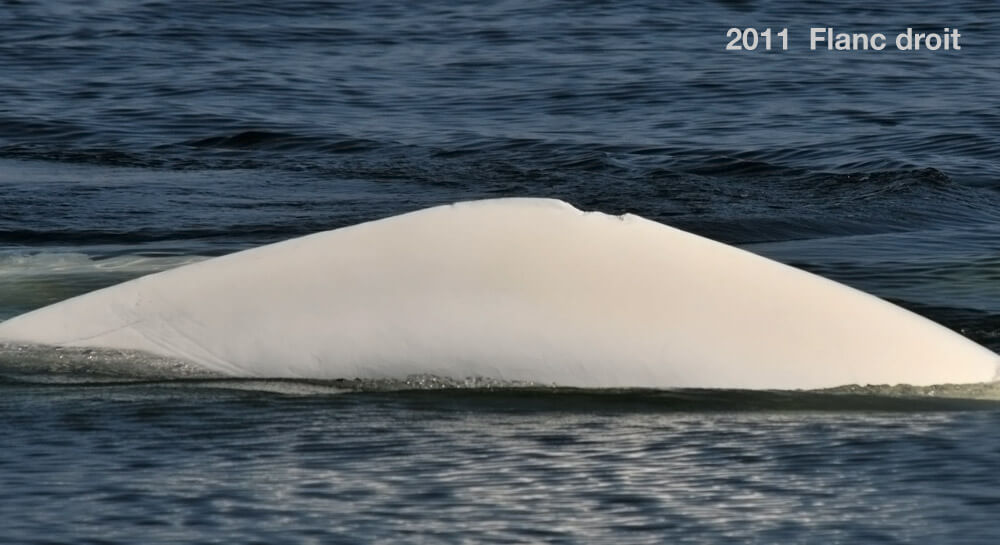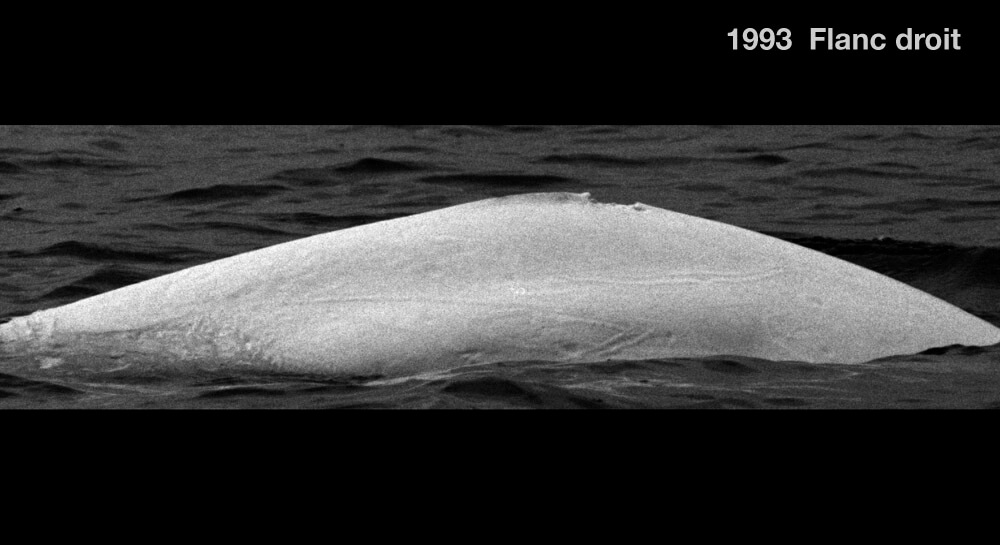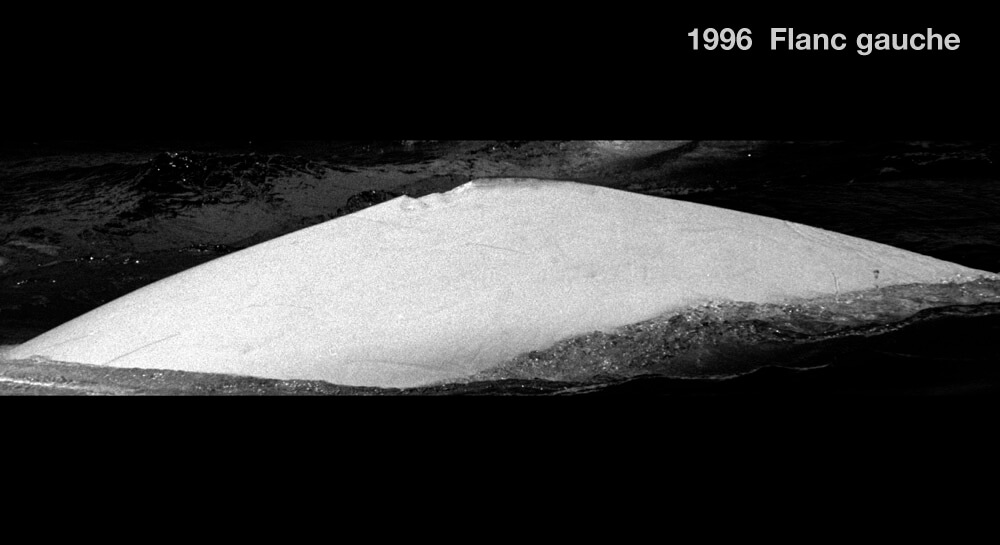Brad
Beluga


Adopted by Gail Wylie
-
ID number
DL0218
-
Sex
Male
-
Year of birth
Before 1972
-
Known Since
1988
Distinctive traits
Brad is identified by the deep scar in the hind part of his dorsal crest. As a number of belugas have scars of this sort, we rely on the serrations around this scar to properly identify him.
Life history
We first encountered Brad in 1988. He was already white at the time. Belugas fade from gray to white in colour between the ages of 12 and 16. Brad would therefore have been born before 1972.
Genetic analysis of a biopsy taken in 1997 confirmed that Brad is a male.
Like other adult bulls of the population in summer, Brad spends most of his time in herds composed essentially of males. He is affiliated with one of the two networks of males that ply the waters of the Saguenay Fjord. Another network of males, known as the “Downstream Boys”, also uses the head of the Laurentian Channel sector and the downriver portion of the Estuary, but avoids the Saguenay. Even if their territories overlap, individuals from one network seldom come into contact with males of other networks.
As the years pass by, males have a tendency to form stable groups of companions. These associations are established gradually and probably play a role in belugas’ reproductive lives. Brad’s most regular companions are DL0266 and DL743, bulls that also belong to one of the Saguenay networks.
How Brad’s story unfolds will teach us volumes on the evolution of belugas’ social lives. By better understanding how belugas live, we will better be able to protect them.
Observations history in the Estuary
Years in which the animal was not observed Years in which the animal was observed
Latest news
We take advantage of the gorgeous weather to visit the downstream sector, where we regularly come into contact with herds of males. We cross paths with Brad off Îles aux Basques. He’s in a herd of some sixty individuals, including adults and a few gray individuals. The herd is split into about ten groups of six at fifteen belugas. We also recognize males JP, Douxi and DL0370.
The animals are scattered and highly active. Some belugas poke their heads above the surface as if to spy on us, others are spitting out water. They’re swimming dynamically and in one distinct direction when they suddenly stop, dive and resurface several times at the same spot. They’re probably feeding. The encounter with Brad is also very rich in terms of acoustics. We hear all kinds of vocalizations: door squeaks, whistles and much more. Belugas are aptly nicknamed “canaries of the sea”.
We take advantage of the gorgeous weather to visit the downstream sector, where we regularly come into contact with herds of males. We cross paths with Brad off Îles aux Basques. He’s in a herd of some sixty individuals, including adults and a few gray individuals. The herd is split into about ten groups of six at fifteen belugas. We also recognize males JP, Douxi and DL0370.
The animals are scattered and highly active. Some belugas poke their heads above the surface as if to spy on us, others are spitting out water. They’re swimming dynamically and in one distinct direction when they suddenly stop, dive and resurface several times at the same spot. They’re probably feeding. The encounter with Brad is also very rich in terms of acoustics. We hear all kinds of vocalizations: door squeaks, whistles and much more. Belugas are aptly nicknamed “canaries of the sea”.
We’re at the mouth of the Saguenay. Brad is swimming alongside Miss Frontenac and Trèfle. They are in a large herd numbering some 60 individuals comprising males, females and a large number of young. There’s heavy activity at the surface: we see pectoral fins, caudal fins, and melons, and the belugas are making quite a ruckus. We also observe a minke whale, which breaches several times.
We’re off the coast of Les Bergeronnes. Brad is in a herd numbering some 150 belugas. The majority are white adults grouped in bands of 4 to 8 individuals.
These large gatherings are short-lived in nature, and consist essentially of males. They are often observed in the downriver sector of the beluga’s summer range, namely between Tadoussac and Les Escoumins. After a few hours, these expansive herds separate into smaller groups.
Sponsor
Gail Wylie adopted Brad, in memory of Brad Wylie (2018).
This donation for whale adoption & research is in memory of my father, Brad Wylie, who died in 2017 in Qualicum Beach, BC at age 90. He would love this direction of some of my inheritance (his careful savings) for this cause. While he was a businessman, he had keen intellectual and philanthropic leanings toward social justice and the Earth’s environment and evolution. He was originally from Toronto but was interested in the whole world, in all ways.




